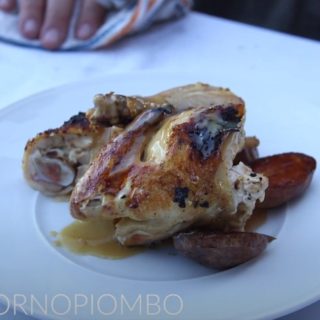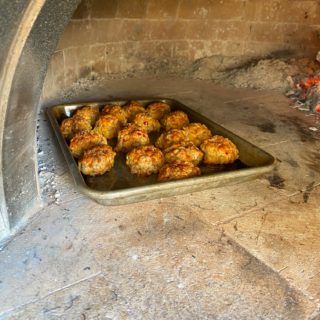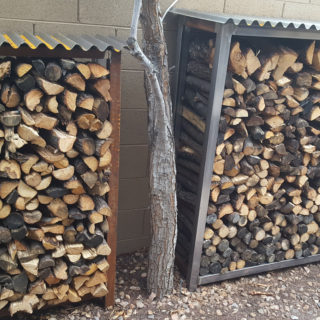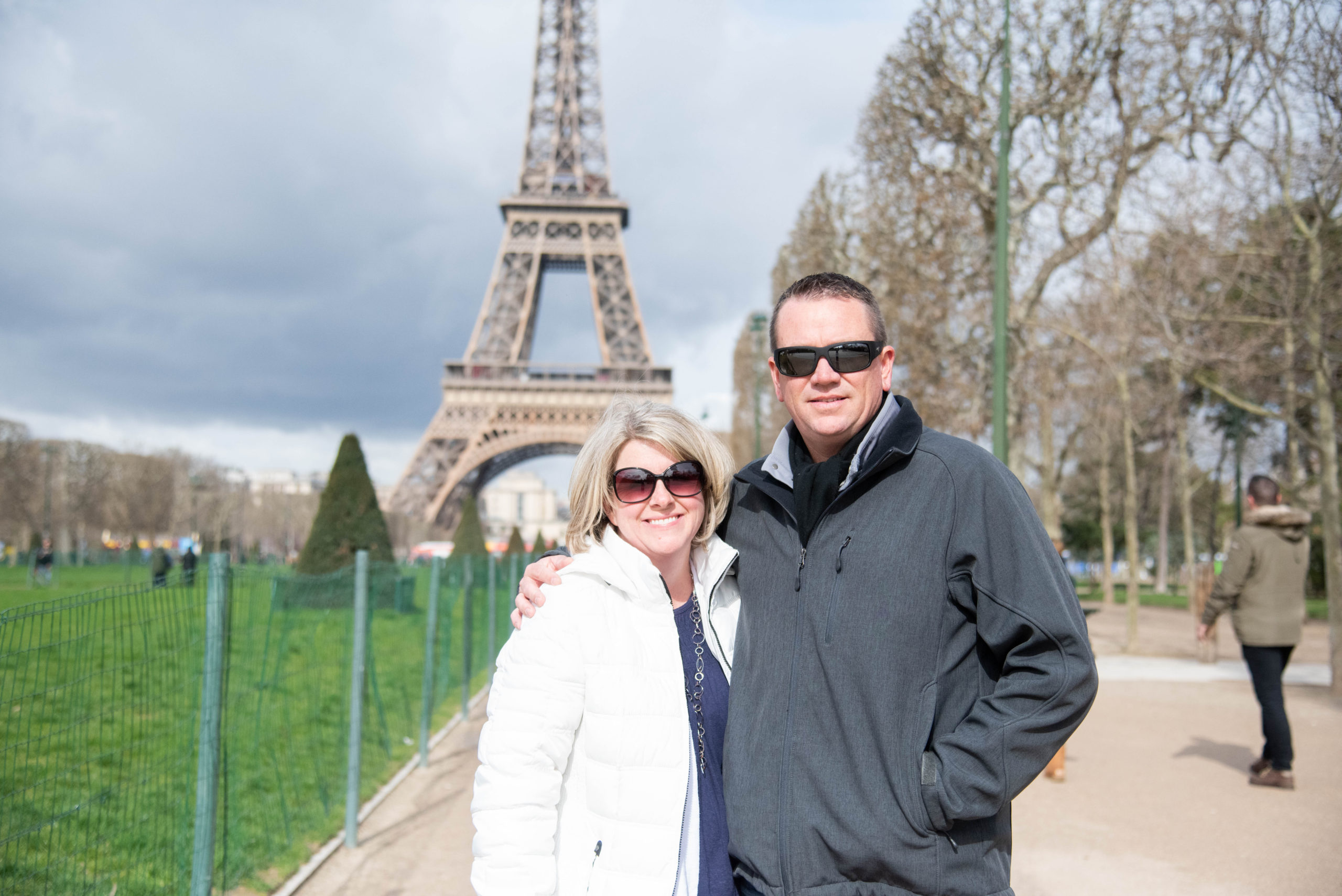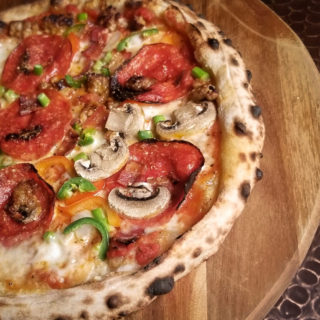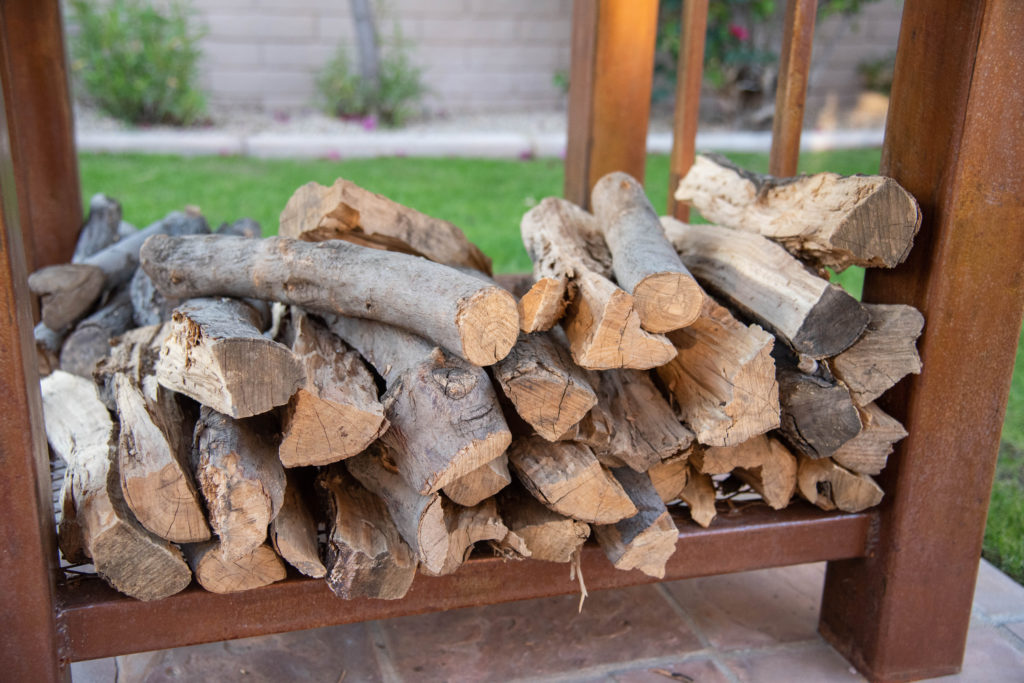
When I originally wrote this post, I knew that wood was very important piece in the wood fired cooking puzzle. However, I didn’t realize how much the type of wood could affect the fire created. We have been unable to find the pecan we had used almost exclusively since day 1. An employee at the wood lot suggested white oak as a good alternative. Well, it wasn’t…at least for us. It seemed to have a shorter burning duration, the wood chunked off when splitting, and didn’t seem as heavy requiring more wood to achieve the same temperatures we had reached with pecan.
We had finally made it to the end of our batch of white oak, so Mr. Fanatic went on the hunt for pecan. The first lot was bare. Next, he stopped at the Paul Bunyan Firewood lot. He quickly learned it is under new management and they ROCK! Unfortunately, they too were out of pecan. Apparently it is very scarce in our area at the moment. The friendly helpful husband and wife team recommended olive wood which is abundant. Based on our previous experience with recommendations, Mr. Fanatic bought a small amount to try, just in case it was not awesome. It is fantastic!! The kind staff at the lot split the wood to his liking and it is working as well as our previously loved pecan.
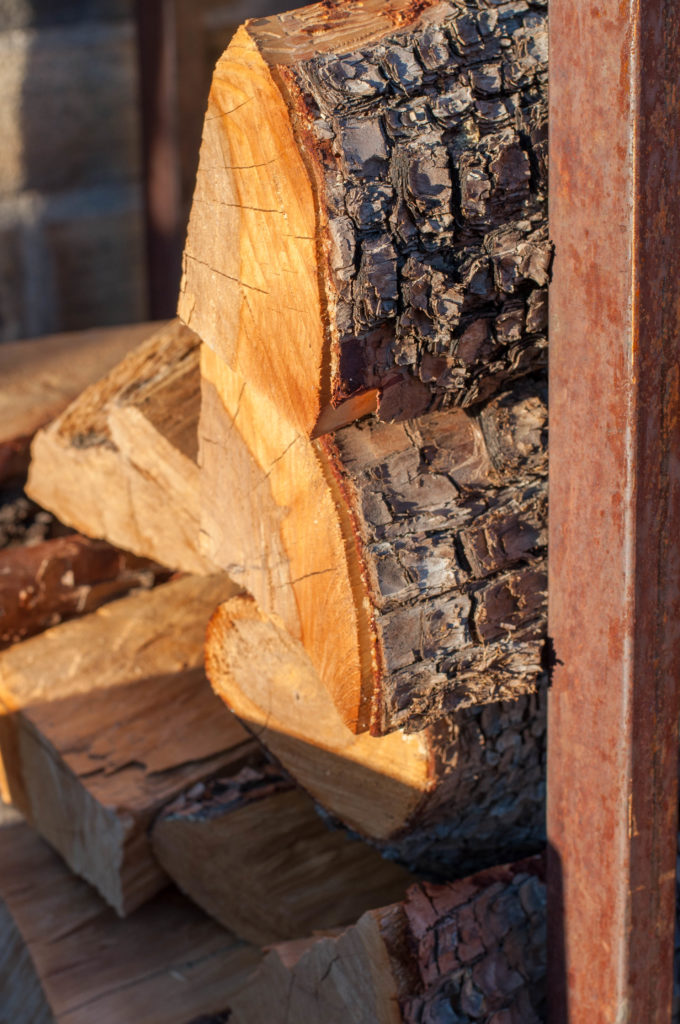
We have also discovered that we like our wood to be smaller in diameter than we had previously thought. We are able to stretch the wood for a a longer period of time with the smaller pieces. Another great tip is that small round “logs” that have not been split will burn for a long period of time. We use those when we want steady heat and temperature rather not to reach the initial high temperature.
You may recall in the original post about wood we mentioned that the wood you use can alter your overall cooking experience greatly. We have certainly found that to be true. If your wood is wet, too large, or too soft your experience may not be what you were hoping for. So, what should you choose to improve the outcome of your meal or meals?
Start with a hard wood. Woods like fruit and nut are great choices. They are dense and will burn very hot for a longer period of time. The wood should also be mild in flavor. It is important to plan what types of food will be made. For many wood fired dishes, pizza for example, significant wood flavor is not desired. Some good options are apple and Australian red gum but neither will burn as hot or as long as pecan or white oak.
Different woods will be available based on geographic location. Find the best wood for a good price in your area and use that. A simple Google search will help turn up your best options. Red gum is very popular because it grows well in Australia. It was brought to the United States to be used for railroad ties. Its dense, strong nature makes it ideal for this application. Only the trunks can be used for railroad ties, so the branches are turned into firewood.
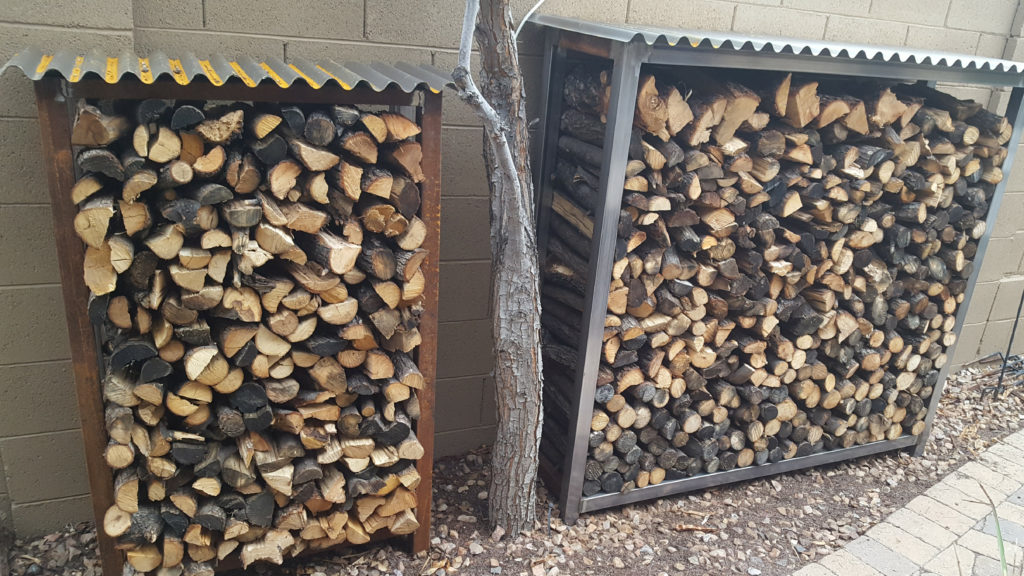
Wood to be used for wood fired brick oven cooking should be cut and dried for at least one year before use. If the wood is too moist, it will be difficult to light. Once lit, that wet wood will create a very smokey fire. This is not only annoying for those near the oven, but this smoke will turn to creosote and coat the inside of the chimney/exhaust system. When the wood is wet, the oven has to work to evaporate the moisture rather than heat the oven. This means it will take the oven longer to reach cooking temperatures and be less efficient.
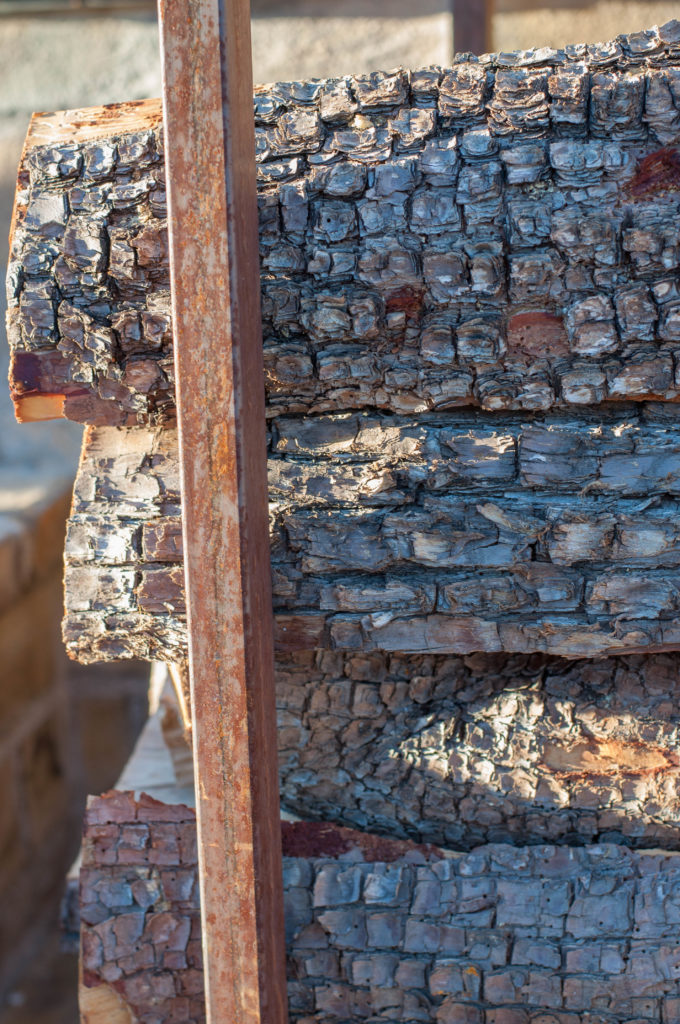
Wood size is also important. Double split logs that are about the length of your forearm are ideal. The fringy bits on these logs will catch fire quickly and get the fire started faster. Although larger logs take longer to light and are better used once the fire has been established, they will burn longer than their smaller counterparts. Beware, round pieces tend to want to roll so they are better used if you have a grate to keep them in place.
Now you know the basics. Start by doing a google search for wood indigenous to your region. Once you have learned what types of wood are locally sourced in your area, make friends with those at your local wood lot. Hopefully, with these tips you will LOVE wood, too!
For more tips and information please follow us on Facebook and Instagram @woodfiredfanatics.
